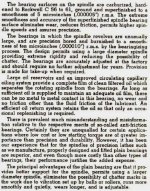PHDesigns
Hot Rolled
- Joined
- Jan 4, 2002
- Location
- Oklahoma, USA
Did a little cut off job the other day and it chattered like mad. First time to really do anything on my lathe. Checked end play and it was .035. Then checked spindle up and down at about .006. Pulled the caps off, and there are no shims, well there was one under one side off the back cap. Anyway figured I could make new bearings no problem. Just curious if any body else has done that. BTW, I got it back together and adjusted end play, and will be trying another cut off test later tonight. When reassembled the spindle sits at about 4 thou up and down.







